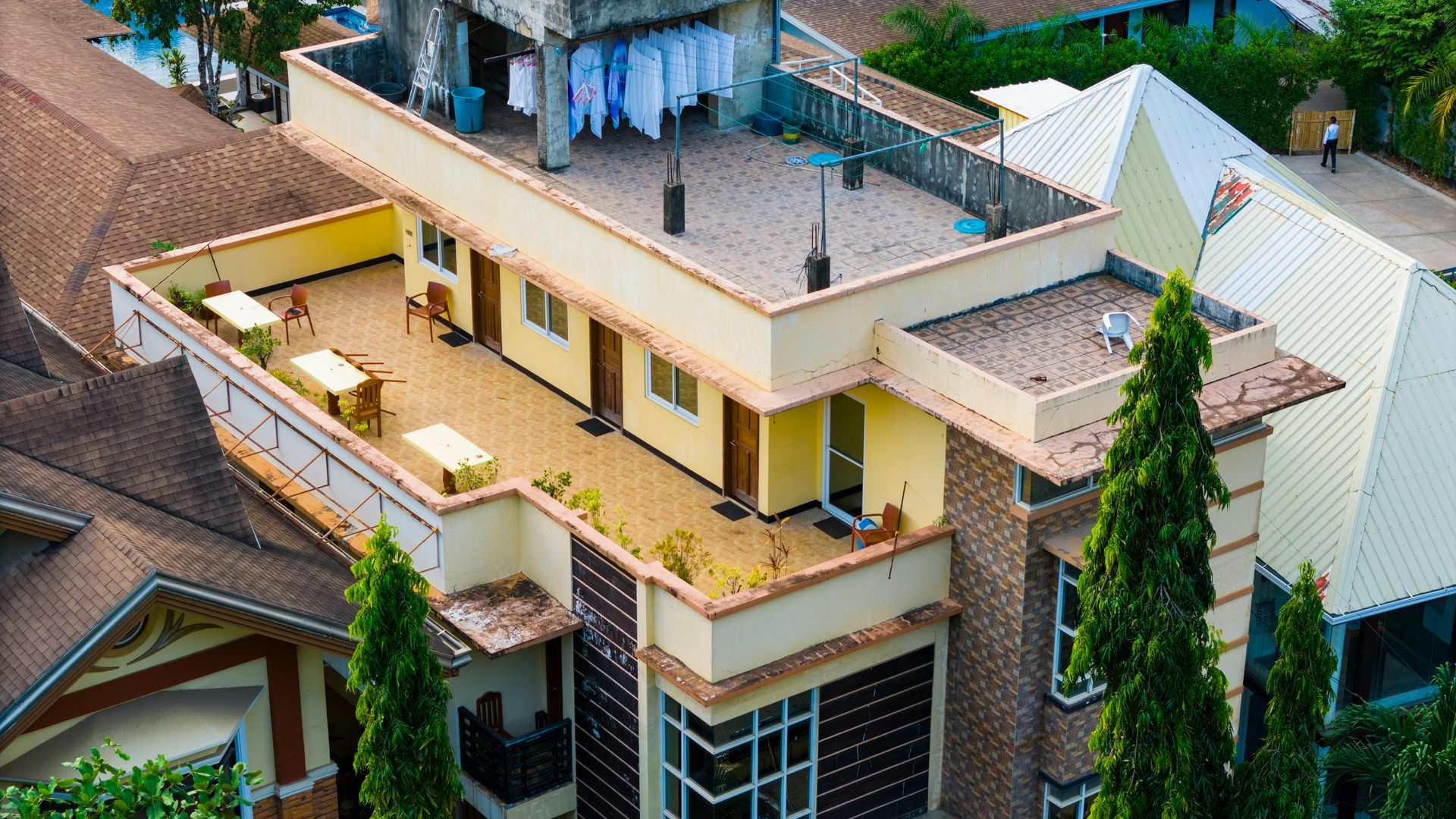
Australia—a country of sunburnt plains, thriving cities, and an increasingly unattainable housing market. The dream of homeownership, once a cornerstone of the Australian way of life, is slipping out of reach for many, particularly younger generations.
The ABC News Daily podcast series, "Housing Hostages," dives deep into this unfolding crisis, exploring its causes, the future it may lead to, and the uncomfortable question of who is responsible. This five-part series paints a stark picture of a nation where housing is no longer just a home but an investment battleground.
This blog unpacks the key takeaways from the series, revealing how the housing market is shaping—and in many ways, limiting—the lives of Australians today.

Episode 1: The Great (Investor) Dream
The first episode, "The Great (Investor) Dream," sets the stage by illustrating the intense competition in the property market and the emotional toll on aspiring homeowners.
Take Justin and Lana, a young couple expecting their first child, who have spent months searching for a home in Sydney—only to be consistently outbid. Even financially stable professionals like Carl, an IT worker with strong savings, find themselves priced out.
Meanwhile, seasoned investor Margaret Lomas, who once held over 40 properties and now owns around 25, provides the investor’s perspective. She bought her first unit for just $28,000 in 1980—an opportunity unimaginable today. While she argues that property investment helps provide rental homes, the sheer growth in investor numbers—from 1.3 million in 2000 to 2.25 million today, with 600,000 owning multiple properties—has undeniably reshaped the market.
The episode leaves us with a harsh reality: for homeownership to become affordable again, prices would have to fall—a solution few politicians or property owners are willing to entertain.
Episode 2: Australia in 2050 – A Bleak Future?
The second episode, "Australia in 2050," takes a sobering look at what the country could look like if the housing crisis continues unchecked.
A major concern? Declining birth rates. Rising house prices mean young Australians are delaying or forgoing having children. Economics professor Rachel Ong ViforJ from Curtin University explains that homeownership is closely tied to family planning—when prices rise, fertility rates fall. Countries like Hong Kong and South Korea, where housing is astronomically expensive, have some of the lowest birth rates in the world.
Australia’s fertility rate is already just 1.5 births per woman, well below the replacement rate of 2.1. Without a population boost from migration, the country faces a shrinking workforce and mounting economic strain.
The episode also highlights a looming retirement crisis. With people taking on 30-year mortgages later in life, many will still be paying off their loans well into their 70s. The average mortgage now sits at $666,000, and in NSW, it’s over $800,000. Retirees who don’t own their homes outright will struggle in the private rental market, where rent often eats up most of a pension. With public housing now catering to fewer than 3% of Australian households, future generations could face an even tougher financial reality.
Even for those who already own homes, Australia’s over-reliance on housing as a financial asset poses serious economic risks.

Episode 3: The Blame Game – Who’s Responsible?
In episode three, "The Blame Game," the series tackles the contentious question: Who—or what—is responsible for Australia’s housing crisis?
Listeners point fingers at negative gearing, capital gains tax breaks, foreign investors, lack of social housing, and even the "Great Australian Dream" itself.
Business editor Michael Janda argues that while no single factor is to blame, key policy changes—like the 1999 capital gains tax discount introduced by the Howard government—had profound consequences. By halving the tax on property investment profits, the government made real estate a far more attractive investment than earning a traditional salary. This, coupled with negative gearing, gave investors a powerful edge over first-home buyers.
Financial deregulation in the 1980s and 1990s, including the entry of foreign banks and relaxed lending standards, also contributed to skyrocketing house prices. Lower interest rates allowed people to borrow more, driving prices even higher.
Then there’s population growth. While rapid migration increases housing demand, Janda argues that the real driver of price surges has been the financialisation of housing—treating homes as wealth generators rather than places to live.
The episode ends on a sobering note: Australia’s housing crisis is a perfect storm of policy decisions, economic factors, and cultural attitudes toward property.
Episode 4: Time for a Crash?
The fourth episode, "Time for a Crash?," explores a provocative question: Would a housing crash actually help?
The podcast examines New Zealand, where house prices have plummeted nearly 18% from their peak due to aggressive interest rate hikes. In some cities, the drop is even steeper, offering a glimpse of what could happen in Australia.
But crashes have consequences. Just look at Ireland during the Global Financial Crisis—house prices halved, unemployment soared, and even though homes became cheaper, many people simply couldn’t buy because banks stopped lending.
Australia’s capital city housing markets are significantly overvalued—by as much as 50% in Sydney and Brisbane, according to economist Shane Oliver. A crash could make housing more affordable, but it could also spark a recession, job losses, and financial instability.
Ultimately, the episode suggests that rather than hoping for a crash, the real solution lies in boosting housing supply.

Episode 5: The Supply Solution – Can We Build Our Way Out?
The final episode, "The Supply Solution," tackles what many experts believe is the only real fix: building more homes.
But it’s not that simple.
Planning regulations and zoning laws limit how and where housing can be built, particularly in inner-city areas where demand is highest. Many existing homeowners resist increased density, fearing it will lower property values.
Then there’s land cost. As prices rise, developers focus on luxury housing rather than affordable homes.
Other challenges include labour shortages, rising construction costs, and infrastructure bottlenecks—new homes need roads, schools, hospitals, and transport links. Without coordinated government planning, development stagnates.
The episode makes it clear: Fixing Australia’s housing crisis requires bold decisions, political will, and long-term investment in infrastructure and planning.
Conclusion: Can We Escape the Housing Trap?
The "Housing Hostages" podcast paints a stark picture of a country trapped by its own housing market. A perfect storm of tax policies, financial deregulation, population growth, and investment incentives has made homeownership a distant dream for many.
The human cost is profound—delayed family planning, retirement insecurity, and deepening generational inequality. While some hope for a crash to reset the market, history warns of the economic devastation that could follow.
So where does that leave us? The only real solution is to increase supply, but that requires overcoming political resistance, planning obstacles, and infrastructure challenges.
The path to affordability won’t be easy, but unless we act now, Australia’s housing crisis will only get worse.
At PB Property, we understand that Australia’s housing market can feel overwhelming—whether you're a first-home buyer, an investor, or looking to secure your financial future. Our expert team provides tailored advice, market insights, and strategic guidance to help you make informed decisions with confidence. From identifying high-growth areas to navigating complex tax policies and financing options, we take the guesswork out of property investment. Book a call with us today and let’s discuss how we can help you achieve your property goals in this ever-changing landscape.
share to



